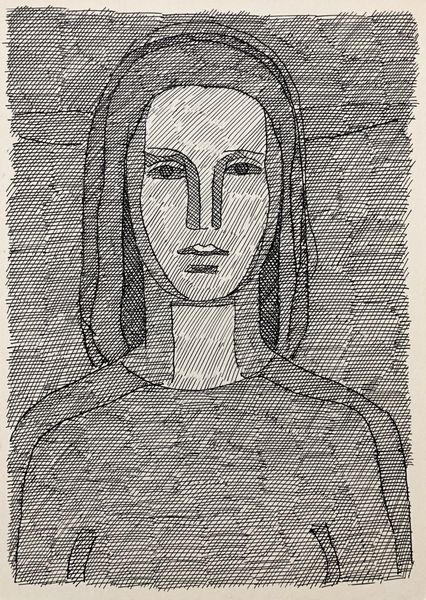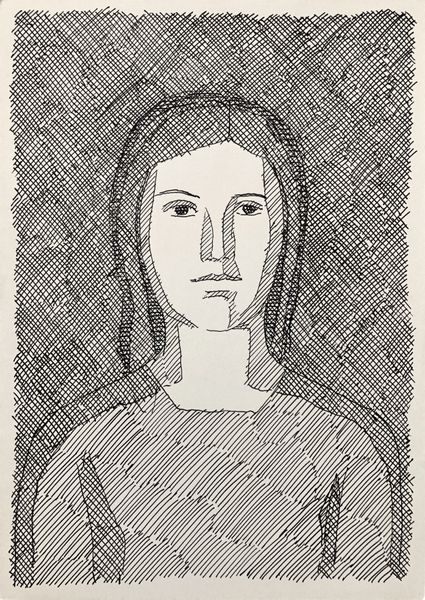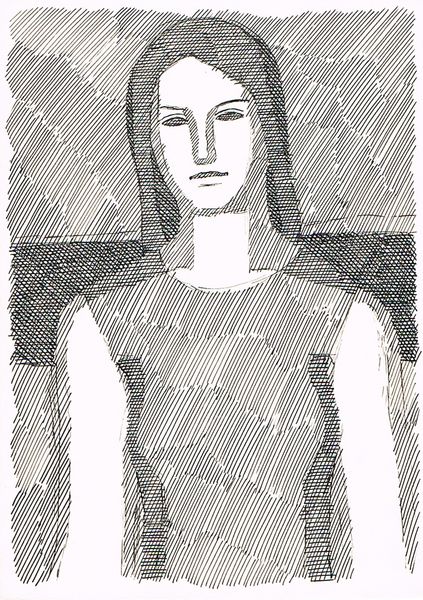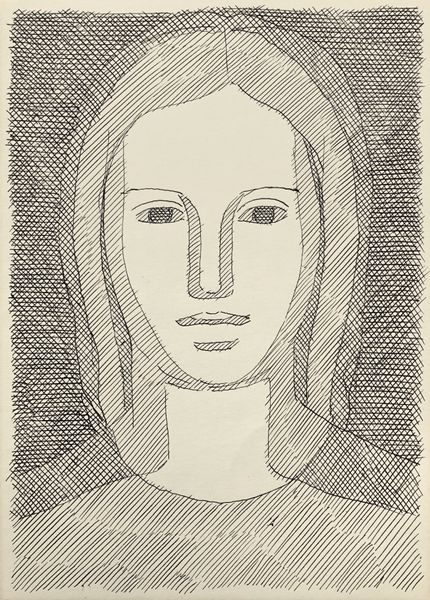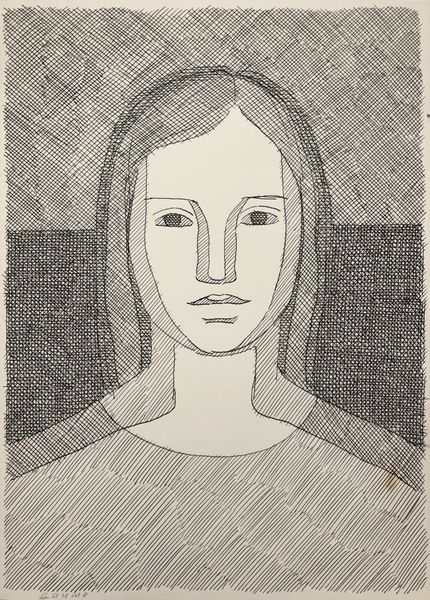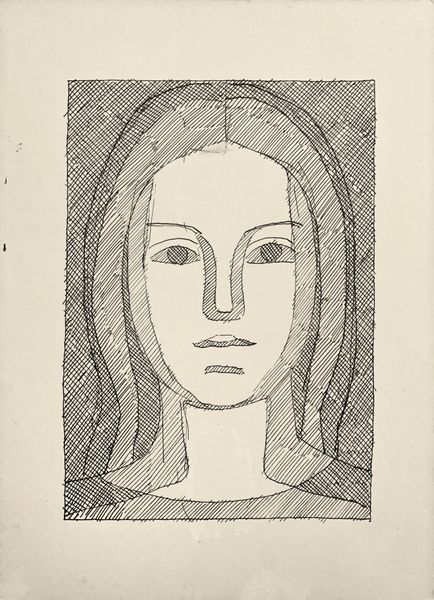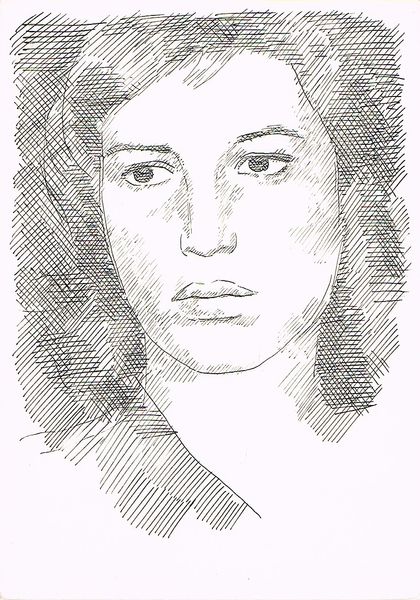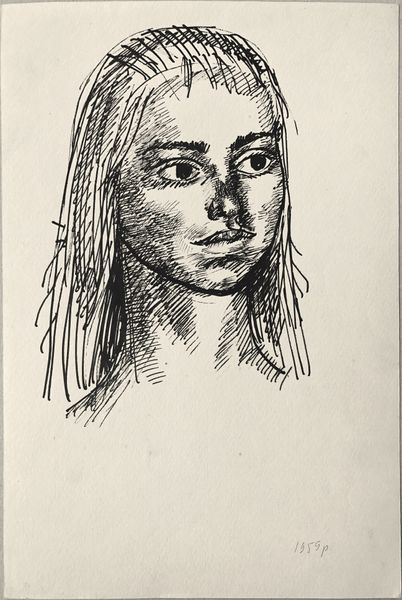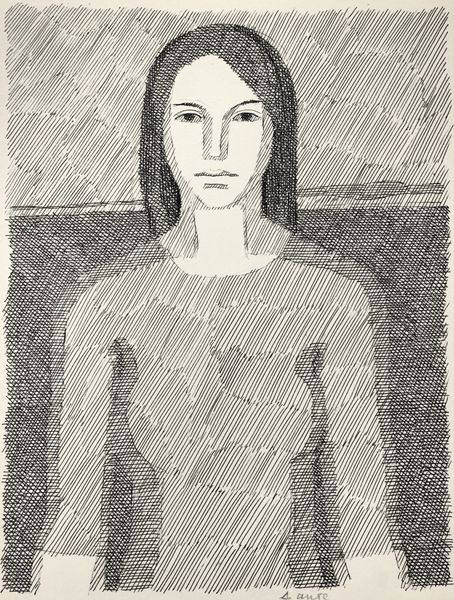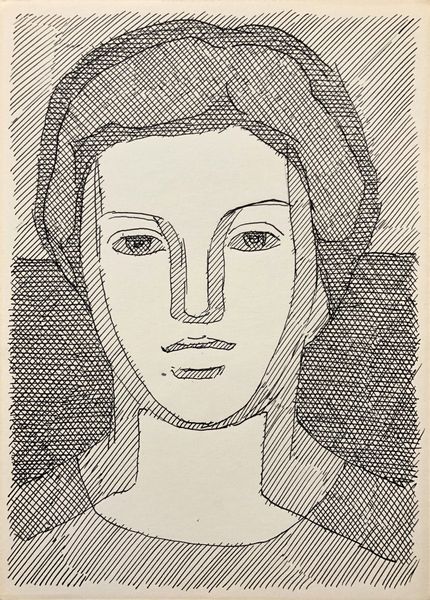
drawing, paper, ink
#
portrait
#
drawing
#
figuration
#
paper
#
ink
#
line
#
modernism
#
realism
Copyright: Hryhorii Havrylenko,Fair Use
Editor: This is Hryhorii Havrylenko's "Female Portrait," created in 1960, using ink on paper. The cross-hatching gives it a kind of austere, almost severe quality, don’t you think? How do you interpret this work? Curator: Absolutely, the intense cross-hatching contributes to a compelling seriousness. I see this piece as participating in a long history of female portraiture, but with a modern twist. Havrylenko renders her not as a passive object, but with a direct gaze that challenges the viewer. Do you notice how the background almost merges with her figure? Editor: Yes, it almost feels like the background is pressing in on her, creating a sense of confinement or… social constraint, maybe? Curator: Precisely. Think about the context: 1960. In many societies, women still faced considerable social and political limitations. Is Havrylenko perhaps using the conventions of portraiture to subtly critique these constraints? The work invites us to consider the sitters identity. Is it universal? Particular? Who was this woman? What was her story? How is it impacted by what she can be based on gender and location? Editor: That’s a powerful interpretation. I hadn't considered how the seemingly simple technique might actually be speaking to broader social issues. Curator: Art so often holds up a mirror, reflecting not only the subject but also the society that produced it. And sometimes, as in this case, the reflection contains subtle acts of resistance. By presenting her with such strength and directness, Havrylenko potentially subverts the traditional objectification embedded in portraiture. Editor: Wow, I will definitely consider that while looking at similar portraits moving forward. This portrait now tells a completely different story! Curator: Indeed. Art unveils itself in layers.
Comments
No comments
Be the first to comment and join the conversation on the ultimate creative platform.
